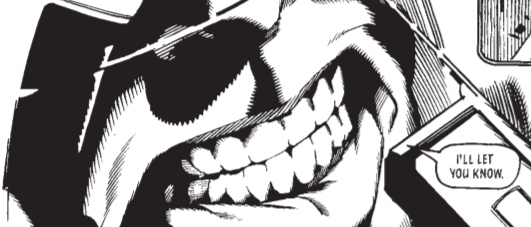(2) SF: TERMINATOR
(1984-1991: TERMINATOR 1-2 – Yeah – I only count the first two films)
“I’ll be back”
The Terminator franchise is the definitive cinematic Robot War franchise, a science fiction trope that seemingly works best when combined with another science fiction trope. In the Terminator franchise, the Robot War is combined with that other compelling science fiction trope of time travel.
In this, it is the direct descendant of H. G. Wells’ The Time Machine – the heart of science fiction is still all Martians and Morlocks. We’ll be looking at Martians soon, but Skynet and its Terminators are Morlocks. The original Morlocks were one of two evolutionary descendants of humanity, evolved from the working class – maintaining the advanced technology of the future for the Eloi, the other descendants of humanity evolved from its leisured upper class. The dark twist of Wells’ novel is that the Morlocks eat the Eloi, “farming” them like livestock. This theme of evolution endures in the Terminator, albeit transformed from Wells’ unrealistic biological evolution (without genetic engineering or mutation) to cybernetic evolution – involving artificial intelligence and robots (or cyborgs) as machine Morlocks that rise up against their human Eloi. This descent from The Time Machine is doubly so for involving time travel, except in the other direction – almost as a direct sequel, as if the Morlocks had reverse engineered the Time Machine to travel back to the present.
Of course, at its core, the original Terminator is a horror film of relentless nightmare pursuit, literally evolved from James Cameron’s own nightmare vision of a metallic skeleton dragging itself from fire – which perhaps explains the franchise’s law of diminishing returns with each sequel away from its horror origins. Yes, even Terminator Judgement Day, which started the rot by breaking the rules of the original – although the action was so cool, we overlooked that. The original allowed time travel for only two ‘people’, the Terminator itself and Kyle Reese sent to stop it. The sequel allowed two more – a good cyborg Terminator and a bad liquid metal Terminator – and so on, until that Skynet time machine must be like a commuter train station with all the robots and humans going back and forth.
People bemoaned Terminator Genisys because it messed up the timeline, but that timeline was messed up from the very first sequel – if not implicitly in the original itself. It’s always bemused me that Skynet is smart enough to build an actual time machine, but not smart enough to work out the implications of it – either you simply can’t change the past (because it includes your time travel already) or you can but it becomes a different timeline from your existing timeline (nice for the new timeline, but not your original timeline which you still haven’t changed). Terminator Genisys simply took the changing timelines already in the franchise in their logical direction from Skynet’s point of view – a timeline-hopping Skynet, because the only way it can actually win by time travel is for itself to do the time travelling, like Skynet crossed with Marty McFly in Terminator meets Back to the Future. Then again, Skynet is just too much of a d!ck – it also bemused me exactly why Skynet’s plan always involves killing humanity rather than making a killing on the stock exchange or otherwise using its artificial intelligence to become rich and powerful, ruling the world rather than destroying it.
FANTASY OR SF?
One of the biggest cinematic SF film franchises – the Robot War and time travel really give the genre away as SF. Although you probably could adapt it to magic in fantasy. There was a real missed opportunity not to do a Terminator-type storyline with time travel in epic fantasy. Think a mashup between The Lord of the Rings and the Terminator – with Sauron for Skynet…
HORROR
As I said, at its core (and in its origin) the Terminator films are SF horror – which essentially is slasher horror in this case, except with a robot killer.
RATING: 5 STARS*****
S-TIER (GOD TIER)











